Sean Bienvenidos A Un Nuevo Apartado De La Cuenta Jainistasarqueólogos, Para Estrenarlo Vamos A Hacer

Sean bienvenidos a un nuevo apartado de la cuenta jainistasarqueólogos, para estrenarlo vamos a hacer un reel a modo debate si os parece bien dicho esto pongan cómodos que empezamos. - ¿Por qué hay esvásticas o cruces gamadas en Japón, india, etc.? Me gustaría aclarar que esta publicación no busca incitar la motivación u odio hacia dicho símbolo, voy a explicaros un poco el verdadero del símbolo y de cómo fue utilizado para el mal. La cruz gamada se usa en muchas culturas del mundo desde el neolítico para adorar al sol, además significa buena fortuna o bienestar, es muy usada por el hinduismo, los antiguos griegos, etruscos y de cómo un simple símbolo dependiendo de cómo se enfoque puede cambiar bruscamente de bueno a malo o a la inversa. - ¿Qué opinan ustedes? Leo gustosamente los comentarios, por favor es un debate, se intenta no buscar idolatrías, yo me mantengo neutro. - Espero que os guste y nos vemos en próximas publicaciones, que pasen una buena semana. - Welcome to a new section of the Jainistasarqueólogos account, to release it we are going to do a reel in debate mode if you think this is well said, make us comfortable that we start. - Why are there swastikas or swastikas in Japan, India, etc.? I would like to clarify that this publication does not seek to incite motivation or hatred towards said symbol, I am going to explain a little about the true symbol and how it was used for evil. The swastika is used in many cultures of the world since the Neolithic to worship the sun, it also means good fortune or well-being, it is widely used by Hinduism, the ancient Greeks, Etruscans and how a simple symbol depending on how it is focused can change abruptly from good to bad or vice versa. - What do you think? I read the comments with pleasure, please, it's a debate, we try not to look for idolatry, I remain neutral. - I hope you like it and see you in future publications, have a good week. - アカウントの新しいセクションへようこそ、それを開くために、我々はあなたがそれが良いと思う場合は、議論としてリールを作るつもりですので、自分自身を快適にし、始めましょう。 - なぜ日本やインドなどに鉤十字や卍があるのでしょうか?この投稿は、シンボルに対する動機や憎悪を煽るためのものではないことを明確にしておきたい。実際のシンボルと、それがどのように悪のために使われたのかについて少し説明しよう。卍は新石器時代から世界中の多くの文化で太陽を崇拝するために使われており、幸運や幸福を意味するものでもある。ヒンドゥー教、古代ギリシャ、エトルリアなどで広く使われており、単純なシンボルがアプローチの仕方によって、善から悪へ、あるいはその逆へと突然変化するものなのだ。 - どう思いますか?私は中立を保ちますので、偶像崇拝を探さないでください。 - それではまた、良い1週間を。
More Posts from Noticiasarquelogicasjaponesas and Others
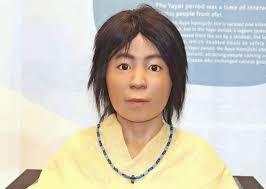




Sean bienvenidos amantes del mundo japonés a una nueva publicación, en este caso voy a dar mi opinión sobre uno de los hallazgos que se han hecho en el país del sol naciente y que tiene que ver con el rostro del niño reconstruido y de cómo la genética se aplica a la arqueología espero que os guste.
-
Antes que nada, el periodo yayoi abarca las siguientes fechas, 300a. C 300 d.C estas fechas son las tradicionales, aunque hay estudios más recientes del siglo IX antes de Cristo desde la península de Kyūshū, pero bueno, eso serán otras publicaciones que realizaré sobre el tema, pero en este caso nos vamos a centrar en este hallazgo este hombre se llama Aoya kamijiro.
-
Fue creado en octubre de 2021, ya que 1998 se encontraron unos restos arqueológicos de más de cien huesos humanos por lo cual es una tarea complicada, pero que nos permite reconstruir las facciones y no solo de la gente prehistórica, sino también de la propia historia como del mundo antiguo y de muchas épocas históricas.
-
Esto se obtiene a raíz de los huesos de los que se pueden extraer pequeñas muestras que son las que nos permitirán, saber si el individuo en cuestión era masculino era femenino y si padecía patologías.
-
Las nuevas tecnologías nos permitirán reconstruir fiel miente de alguna forma u otra el rostro, a la cual parece, ya que esto es un avance muy notable, tanto en la genética como en la arqueología porque podemos reconstruir bastante bien a la gente del pasado no sobre toda la población, que suele estar olvida en un segundo plano.
-
Espero que os haya gustado que pasen una buena semana.
-
日本を愛する皆さん、新しい出版物へようこそ。今回は、日出ずる国で行われた、復元された子供の顔と遺伝学に関係する発見の 1 つについて、私の意見を述べたいと思います。考古学にも応用できると思います。
-
まず、弥生時代は以下の300aの年代になります。 西暦 300 年頃 これらの日付は伝統的なものですが、九州半島からは紀元前 9 世紀に関するより最近の研究もありますが、それはまた別の出版物でこのテーマについて行う予定ですが、この場合は次のようにします。この発見に焦点を当ててください この男の名前は青谷神代です。
-
1998年に100体以上の人骨の考古学的遺跡が発見されて以来、この計画は2021年10月に作成された。そのため複雑な作業ではあるが、先史時代の人々の派閥だけでなく、古代世界や歴史上のさまざまな時代からの歴史そのものです。
-
これは骨から得られるもので、少量のサンプルを抽出することで、問題の人物が男性か女性か、また病状を患っていたかどうかを知ることができます。
-
新しいテクノロジーにより、何らかの方法で、その顔に見える顔を忠実に復元できるようになります。これは、遺伝学と考古学の両方において非常に注目に値する進歩です。なぜなら、私たちは過去の人々についてではなく、非常によく復元できるからです。国民全体が、通常は背景に隠れて忘れ去られています。
-
気に入っていただければ幸いです。良い一週間をお過ごしください。
-
Welcome lovers of the Japanese world to a new publication, in this case I am going to give my opinion on one of the discoveries that have been made in the country of the rising sun and that has to do with the reconstructed child's face and how genetics It applies to archeology. I hope you like it.
-
First of all, the yayoi period covers the following dates, 300a. C 300 AD These dates are the traditional ones, although there are more recent studies from the 9th century BC from the Kyūshū peninsula, but well, that will be other publications that I will make on the subject, but in this case we are going to focus on this discovery This man's name is Aoya kamijiro.
-
It was created in October 2021, since archaeological remains of more than one hundred human bones were found in 1998, which is why it is a complicated task, but it allows us to reconstruct the factions and not only of the prehistoric people, but also of history itself. as from the ancient world and from many historical periods.
-
This is obtained from the bones from which small samples can be extracted that will allow us to know if the individual in question was male or female and if he suffered from pathologies.
-
New technologies will allow us to faithfully reconstruct the face, in some way or another, to which it appears, since this is a very notable advance, both in genetics and in archeology because we can reconstruct quite well the people of the past not about the entire population, which is usually forgotten in the background.
-
I hope you liked it and have a good week.

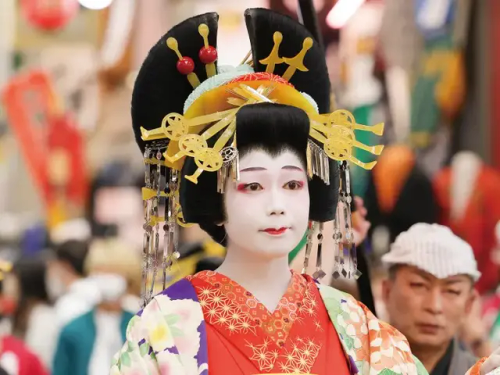





Capítulo 1: Diferencias entre Geisha y una Oiran Introducción. Sean bienvenidos japonistasarqueologicos una nueva entrega resumen, en esta ocasión os contaré que es una Oiran (おいらん) dicho esto comencemos. - Las Oiran son prostitutas que surgieron en el siglo XVII en el período Edo. No debemos confundirlas con las Geishas(げいしゃ). - En la segunda imagen os enseño una Oiran (おいらん) del anime Kimetsu no Yaiba(los guardianes de la noche) - Espero que os haya gustado y nos vemos en próximas publicaciones de Historia, arqueología, geografía nipona, entre otros temas, Que pasen una feliz semana. - Chapter 1: Differences between Geisha and an Oiran Introduction. Japonistasarqueologicos are welcome to a new summary installment, this time I will tell you that it is an Oiran (おいらん) having said that, let's start. - The Oiran are prostitutes that emerged in the 17th century in the Edo period. We should not confuse them with Geishas(げいしゃ). - In the second image I show you an Oiran (おいらん) from the anime Kimetsu no Yaiba (the guardians of the night) - I hope you liked it and see you in future publications of History, archaeology, Japanese geography, among other topics, Have a happy week. - 第1章 芸者と花魁の違い紹介。 Japonistasarqueologicos は、新しい総集編へようこそ、今回はおいらん (おいらん) ということで、始めましょう。 - 花魁は、江戸時代の17世紀に登場した売春婦です。 芸者(げいしゃ)と混同してはいけません。 - 2 番目の画像では、アニメ鬼滅の刃 (夜の守護者) の花魁 (おいらん) を示しています。 - あなたがそれを気に入ってくれて、歴史、考古学、日本の地理、その他のトピックの今後の出版物でお会いできることを願っています。



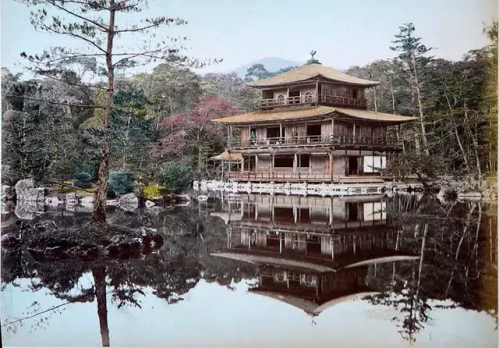



Sean bienvenidos, japonistasarqueologos, a una nueva entrega, cultural-artística vamos a hablar sobre Kinkaku-ji una vez dicho esto pónganse cómodos que empezamos. - El kinkaku-ji se localiza en la ciudad de Kyoto, en la prefectura de Kanto. Kyoto fue una de las dos grandes capitales del Japón feudal porque su otra ciudad de gran peso fue Nara, pero eso es otra historia. - El Kinkaku-ji, fue construido en el siglo XIV, el que se ve actualmente es una reconstrucción porque el original se destruyó en un incendio en 1950 y el actual data de 1980 aproximadamente ya en 1880 perdió su revestimiento de pan de oro, fue La residencia de Ashikaga yoshimitsu tras su muerte lo donó a la orden religiosa y pasó a ser un templo budista. - Espero que os guste y nos vemos en próximas publicaciones. Fuentes de foto: https://blogukiyoe.es/kinkaku-ji-en-el-ukiyo-e wikipedia - Welcome, Japanese archaeologists, to a new cultural-artistic installment, we are going to talk about Kinkaku-ji. Once that has been said, make yourself comfortable and we will begin. - Kinkaku-ji is located in the city of Kyoto, Kanto prefecture. Kyoto was one of the two great capitals of feudal Japan because its other major city was Nara, but that is another story. - The Kinkaku-ji was built in the 14th century, the one currently seen is a reconstruction because the original was destroyed in a fire in 1950 and the current one dates from approximately 1980 and in 1880 it lost its gold leaf coating, it was La residence of Ashikaga Yoshimitsu after his death he donated it to the religious order and it became a Buddhist temple. - I hope you like it and see you in future posts. Photo sources: https://blogukiyoe.es/kinkaku-ji-en-el-ukiyo-e Wikipedia - 日本の考古学者の皆さん、新しい文化芸術の回へようこそ。金閣寺についてお話します。それが終わったら、落ち着いてから始めましょう。 - 金閣寺は、関東県京都市にあります。京都は、もう一つの主要都市が奈良であったため、封建時代の日本の二大首都の一つでしたが、それはまた別の話です。 - 金閣寺は 14 世紀に建てられ、現在見られるものは再建されたものです。オリジナルは 1950 年の火災で焼失し、現在のものは 1980 年頃のもので、1880 年に金箔のコーティングが失われ、ラ邸でした。足利義満の死後、教団に寄進され仏教寺院となった。 - 気に入っていただければ幸いです。今後の投稿でお会いしましょう。 - 写真出典: https://blogukiyoe.es/kinkaku-ji-en-el-ukiyo-e ウィキペディア





Sean bienvenidos, japonistasarqueologicos a una entrega de arquitectura japonesa una vez dicho esto pagase cómodos que empezamos. - Esta pagoda se localiza en Kyoto y data del siglo XV, a este tipo de pagodas se les llama Tahōtō, se caracteriza por tener solo dos plantas, las ventanas tienen forma de flor de loto, clara influencia de china y Korea. - Espero que os haya gustado y nos vemos en próximas publicaciones que pasen una buena semana. - ジャポニスタサルケオロギコスの皆さん、日本建築の配信へようこそ。そうは言っても、安心して始めてください。 - この塔は京都にあり、15 世紀に建てられました。このタイプの塔は多宝塔と呼ばれ、2 階しかないのが特徴で、窓は蓮の花の形をしており、明らかに中国と韓国の影響を受けています。 - 気に入っていただければ幸いです。今後の投稿でお会いしましょう。良い一週間をお過ごしください。 - Welcome, japonistasarqueológicos to a delivery of Japanese architecture, having said this, pay comfortable that we start. - This pagoda is located in Kyoto and dates from the 15th century, this type of pagoda is called Tahōtō, it is characterized by having only two floors, the windows are in the shape of a lotus flower, a clear influence from China and Korea. - I hope you liked it and see you in future posts, have a good week.
El origen de un país y su prehistoria, un paseo por la historia del país del sol naciente. /国の成り立ちと先史、日出ずる国の歴史を歩く。/The origin of a country and its prehistory, a walk through the history of the country of the rising sun.
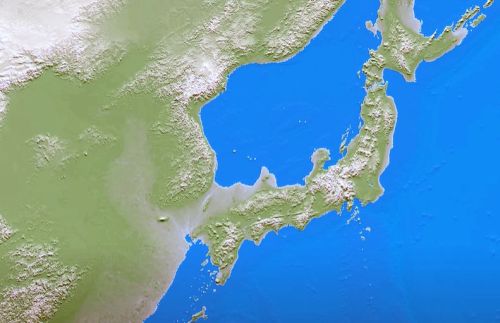

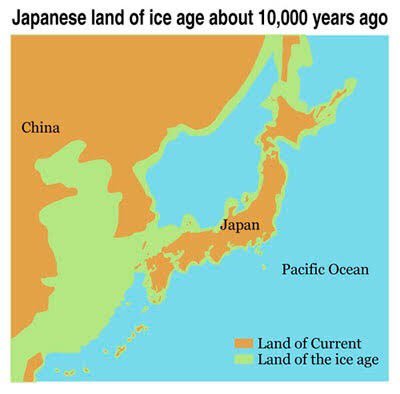

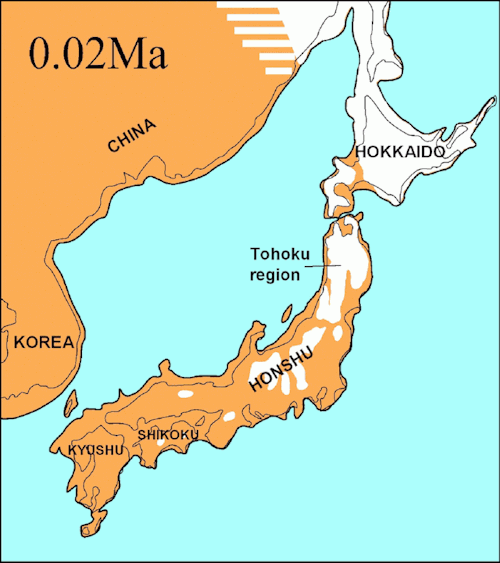

Sean bienvenidos, japonistasarqueológicos, a una nueva entrega de arqueología nipona e historia nipona, una vez dicho esto pónganse cómodos qué empezamos.
-
En los capítulos 1,2,3:Hablamos de: ¿Cuándo llegaron por primera vez los homínidos a Japón? ¿De qué vivían? Hablamos un poco de su geografía, de las cuatro eras glaciales, también se mencionó el holoceno. Empezamos a hablar del pleistoceno, y de cuando empezó la prehistoria de hace 2,5 (esta fecha está desfasada actualmente ronda 4 millones, por los hallazgos de industria lítica) a 7 millones de años. Comentamos algunos homínidos: Homo neanderthalensis, Homo heidelbergensis, homo ergaster entre otros homínidos, comentamos como África es la cuna de la humanidad, y su diversidad de dispersiones migratorias. También se comentó la llegada los homínidos a Okinawa hace 30.000-40.000 años y los Ainus como posibles primeros pobladores. Seguimos hablando del pleistoceno, estuvimos explicando un poco sobre el pleistoceno, se mencionó un poco la formación del archipiélago, mencioné mi posible teoría y al final terminamos con ¿Cómo se llaman las placas tectónicas que forman el archipiélago?
-
Espero que os guste y nos vemos en próximas publicaciones, que pasen una buena semana.
-
日本の考古学者諸君、ようこそ、日本考古学と日本史の新連載へ!さあ、くつろいで、始めよう。
第1章、第2章、第3章では、「ヒト科の動物はいつ日本にやってきたのか?地理、4つの氷河期、完新世についても少し触れました。更新世について話し始め、先史時代が始まった250万年前(この年代は、石器産業の発見により、現在では約400万年古くなっている)から700万年前について話した。ホモ・ネアンデルターレンシス、ホモ・ハイデルベルゲンシス、ホモ・エルガスターなどのホミノイドについて解説し、アフリカが人類発祥の地であること、その移動分散の多様性について述べた。また、3万~4万年前の沖縄へのヒト科動物の到着と、最初の入植者である可能性のあるアイヌ人についても議論した。私たちは更新世について話を続け、列島の形成について少し説明し、私が可能性のある説を述べ、最後にこう締めくくった。 列島を形成しているプレートの名前は?
それではまた、良い一週間を。
-
Welcome, Japanese archaeologists, to a new instalment of Japanese archaeology and Japanese history, so make yourselves comfortable and let's get started.
In chapters 1,2,3:We talk about: When did hominids first arrive in Japan? What did they live on? We talked a little bit about their geography, the four ice ages, the Holocene was also mentioned. We started talking about the Pleistocene, and when prehistory began from 2.5 (this date is now out of date by about 4 million years ago, due to the findings of lithic industry) to 7 million years ago. We commented on some hominids: Homo neanderthalensis, Homo heidelbergensis, homo ergaster among other hominids, we commented on how Africa is the cradle of humanity, and its diversity of migratory dispersions. We also discussed the arrival of hominids in Okinawa 30,000-40,000 years ago and the Ainus as possible first settlers. We continued talking about the Pleistocene, we were explaining a bit about the Pleistocene, the formation of the archipelago was mentioned a bit, I mentioned my possible theory and at the end we finished with What are the names of the tectonic plates that form the archipelago?
I hope you like it and see you in future posts, have a nice week.

Sean bienvenidos, japonistasarqueológicos al yacimiento arqueológico del toro, os presento a los dos últimos, estudiantes de la arqueología de posguerra, al final haré una pequeña conclusión personal, una vez dicho esto pónganse cómodos que empezamos. - Yoshie inaba Nacida en 1932 ¿Qué aportaciones hizo en el yacimiento? Anotó todos los datos que pudo, eso facilitó mucho las futuras investigaciones, además ayudó a la gente para que no fueran muy cargadas. Os pondré una foto del Uniforme de escuela secundaria Fuji - Girls. Sr. Wan Kikawa:Nacido en 1928, le contrató uno de ingeniería civil, en lo que es ahora Hinamigo, Prefectura de Nagasaki. Él encontró los siguientes objetos: dos brazaletes de cobre superpuestos y una espada de madera, que os pondré a continuación. - Conclusión personal: Estimada audiencia, no solo veáis a los yacimientos solo por los restos, también hay personas que ayudan a preservar los restos para próximas generaciones, además si no fueran por estas personas mencionadas, anteriormente seguramente sus aportaciones al yacimiento y a la historia de Japón no hubieran facilitado las cosas todos tenemos que poner nuestro grano de arena para crear la historia humana del pasado y del futuro. Además en aquella época dada persona con lo poco tenía aportan lo que podrían al yacimiento, sobre todo los agricultores de las cercanías, por ejemplo, las dificultades son la que hacen que prosperen las cosas. Espero que os haya gustado y nos vemos en próximas publicaciones que pasen una buena semana. 日本の考古学者の皆さん、エル・トロ遺跡へようこそ。戦後考古学の学生の皆さん、最後のお二人に私は最後に小さな個人的な結論を述べます。そうは言っても、気を楽にしてから始めましょう。 - Yoshie inaba 1932 年生まれ 彼女はこのサイトにどのような貢献をしましたか? 彼はできる限りすべてのデータを書き留めたので、今後の調査がはるかに容易になり、人々が過度の負担にならないようにも助けられました。 富士高校の制服の写真を載せます - 女の子たち。 木川湾氏:1928年生まれ、現在の長崎県日並郷で土木技師に就職。 彼は次の物体を発見しました: 2 つの重なり合った銅製のブレスレットと 1 つの木の剣です。これらを以下に示します。 - 個人的な結論: 親愛なる聴衆の皆さん、遺跡の現場を訪れるだけでなく、後世のために遺跡を保存するのに協力する人々もいます。もし上記の人々がいなかったら、遺跡と歴史への彼らの貢献は間違いなくあります。私たちは皆、過去と未来の人類の歴史を創造するために自分の役割を果たさなければなりません。 さらに、当時は、ある人がなけなしの努力で現場、特に近隣の農家にできる限りの貢献をし、困難こそが繁栄を生むのです。 気に入っていただければ幸いです。今後の投稿でお会いしましょう。良い一週間をお過ごしください。
Welcome, Japanesearchaeologicalists to the archaeological site of El Toro, I present to you the last two, students of post-war archaeology, at the end I will make a small personal conclusion, having said that, make yourself comfortable and let's begin.
Yoshie inaba Born in 1932 What contributions did she make to the site? She wrote down all the data she could, which made future investigations much easier, and also helped people so that they were not burdened too much. I will post a photo of the Fuji High School Uniform
Girls. Mr. Wan Kikawa: Born in 1928, he hired him as a civil engineer, in what is now Hinamigo, Nagasaki Prefecture. He found the following objects: two overlapping copper bracelets and a wooden sword, which I will show you below. - Personal conclusion: Dear audience, do not only see the sites for the remains, there are also people who help preserve the remains for future generations, and if it were not for these people mentioned above, surely their contributions to the site and the history of Japan They would not have made things easier. We all have to do our part to create the human history of the past and the future. Furthermore, at that time, a given person with what little they had contributed what they could to the site, especially the nearby farmers, for example, difficulties are what make things prosper.
I hope you liked it and see you in future posts, have a good week.
for more information/詳細については:https://www.shizuoka-toromuseum.jp/toro-site/people/people-intervew01/

Sean bienvenidos, japonistasarqueológicos, a una nueva entrega de religión nipona, una vez dicho esto pónganse cómodos qué empezamos. - Seguramente, todos hemos escuchado hablar del Budismo y Sintoísmo, dos religiones muy diferentes entre sí, ya que sus pilares religiosos no están hechos de la misma materia, voy a intentar resumir este tema para que todos podamos entenderlo mejor. ¿Cuándo llego el budismo a Japón? Llego en el siglo VI d.c en el período kofun también denominado protohistoria, lo que no voy a negar y lo que todos sabemos es que china, India y otros países influenciaron a Japón y eso lo podemos ver todavía a día de hoy. - Pero hace poco vi el uso de la palabra Sincretismo religioso, lo cual, me parece el término de lo menos apropiado, ¿Qué significa sincretismo? Unión, fusión e hibridación, casos más claros, lo podemos ver en Latinoamérica y con Grecia y Roma. Por lo cual el término más apropiado para este caso sería coexistencia o convivencia, además en el periodo meiji hubo una reforma religiosa para separar ambas religiones y convivencia al sintoísmo, religión del estado, a esto se le llama Shinbutsu bunri en hiragana sería:(しんぶつぶんり) ¿Qué opinan ustedes? - Espero que os haya gustado y nos veamos en próximas publicaciones que pasen una buena semana. - ようこそ、考古学的日本びいきの皆さん、日本の宗教の新連載へ。 - 仏教と神道、この二つの宗教の柱は同じ材料でできているわけではないので、私たちは皆、この二つの宗教について聞いたことがあるだろう。 仏教はいつ日本に伝来したのだろうか?仏教が日本に伝来したのは紀元6世紀の古墳時代で、原始時代とも呼ばれている。しかし、中国やインド、その他の国々が日本に影響を与えたことは否定しないし、誰もが知っていることである。 - しかし最近、宗教的シンクレティズムという言葉が使われているのを目にした。シンクレティズムとは何を意味するのだろうか?統合、融合、ハイブリッド化、その最も明確な例はラテンアメリカやギリシャ、ローマに見られる。また、明治時代には宗教改革が行われ、両宗教を分離し、国教である神道と共存させた。 - 今後の記事もお楽しみに。
-
Welcome, archaeological Japanophiles, to a new instalment of Japanese religion, so make yourselves comfortable and let's get started.
Surely, we have all heard about Buddhism and Shintoism, two very different religions from each other, as their religious pillars are not made of the same material, I will try to summarize this topic so we can all understand it better. When did Buddhism arrive in Japan? It arrived in the 6th century A.D. in the Kofun period also called protohistory, what I will not deny and what we all know is that China, India and other countries influenced Japan and we can still see that today.
But recently I saw the use of the word religious syncretism, which seems to me the least appropriate term, what does syncretism mean? Union, fusion and hybridisation, the clearest cases of which can be seen in Latin America and with Greece and Rome. So the most appropriate term for this case would be coexistence or coexistence, also in the meiji period there was a religious reform to separate both religions and coexistence to Shinto, state religion, this is called Shinbutsu bunri in hiragana would be:(しんぶつぶんり) What do you think?
Hope you liked it and see you in future posts have a good week.





Sean bienvenidos japonistasarqueologos a una nueva entrega, en esta ocasión nos vamos al fondo marino para ver unas de las mayores ruinas arqueológicas que están generando en la comunidad científica muchas controversias desde que fueron descubiertas en 1985. Dicha estructura se encuentra en Okinawa la cual está compuesta por las islas Ryukyu. - Las ruinas tienen unos 10.000 años de antigüedad ¿Hay dos teorías?La primera que dicen los científicos es: que es natural.La segunda es que es artificial.Yo he visto, todo el material registrado hasta el momento en fotos y vídeos para ser sinceros no me parece para nada natural hay puntos en lo que claramente que están trabajados por la mano del hombre. Sí nos imaginamos el montículo fuera de la superficie lo más probable es que se pareciera en su forma natural a una elevación en el terreno y lo más probable es que estuviera en su estado más virgen.-También hay que destacar que el nivel del mal sobre esas fechas era 120 veces más bajo que el actual, por lo que no sería raro que los moradores lo usaran como un lugar sagrado. Ya que para los japoneses el trabajo en roca no es nada nuevo y sobre todo construcciones colosales hechas en piedra como veremos en próximas publicaciones. - Espero que os haya gustado y espero vuestras opiniones y debates sobre el tema que nunca nos va a dejar de sorprender os deseo un feliz dia y una buena semana. - 日本の考古学者は新作を歓迎します。今回は海底に行き、1985年に発見されて以来、科学界で多くの論争を引き起こしている最大の考古学的遺跡の1つを見に行きます。琉球諸島。-遺跡は約1万年前のものですが、2つの説がありますか?科学者が最初に言うことは、それは自然なことだということです。二つ目は、それが人工的であるということです。これまでに写真やビデオに記録されたすべての資料は、正直なところ、私にはまったく自然に見えません。それらが人間の手によって明確に処理されている点があります。地表の外側のマウンドを想像すると、それは自然な形で地面の隆起に似ている可能性が高く、最も手付かずの状態である可能性が最も高いです。-また、当時の悪のレベルは現在の120分の1であったため、住民が聖地として利用することも珍しくありません。日本のロック作品は目新しいものではなく、特に将来の出版物で見られるように石で作られた巨大な構造です。-皆様のご愛顧を賜りますよう、よろしくお願い申し上げます。今後とも変わらぬご意見・ご感想をお待ちしております。 - Welcome japonistaarqueologos to a new installment, this time we go to the seabed to see one of the largest archaeological ruins that are generating many controversies in the scientific community since they were discovered in 1985. This structure is located in Okinawa, which is made up of the Ryukyu Islands. - The ruins are about 10,000 years old. Are there two theories? The first one that scientists say is: that it is natural. The second is that it is artificial. I have seen all the material recorded so far in photos and videos, to be honest, it does not seem natural at all to me. There are points that are clearly worked by the hand of man. If we imagine the mound off the surface, it most likely resembled in its natural form a rise in the ground and most likely it was in its most virgin state. - It should also be noted that the level of evil at that time was 120 times lower than today, so it would not be unusual for the inhabitants to use it as a sacred place. Since for the Japanese, rock work is nothing new and especially colossal constructions made of stone as we will see in future publications. - I hope you liked it and I look forward to your opinions and debates on the subject that will never cease to surprise us. I wish you a happy day and a good week.

Sean bienvenidos, japonistasarqueológicos a una nueva entrega en esta ocasión os presento a uno de los arqueólogos que excavan en el yacimiento del Toro en la arqueología de posguerra. - ¿Qué es la arqueología de posguerra? Disciplina, que abarca la década de 1947-1999 tras la 2 guerra mundial, Japón se dedicó a realizar excavaciones en masa, además de salir de la situación de posguerra, mejorando el país e invirtiendo en el patrimonio cultural, para que la población estuviera entretenida con otros quehaceres por ejemplo en la década de los 50 surge el famoso milagro Japonés. - Nuestro personaje en esta ocasión se trata de, kenichi Miura nacido en 1932, después de la guerra en japón surge un movimiento llamado Bunka federación y todas las escuelas querían hacer algo por la cultura. Fue una gran labor por parte del país del sol naciente a pesar de la situación en la que se encontraba digno de administración. - Espero que os haya gustado y nos vemos en próximas publicaciones que pasen una buena semana. 日本の考古学者たちよ、戦後の登呂遺跡考古学の新連載へようこそ。 - 戦後考古学とは何か?第二次世界大戦後の1947年から1999年の10年間をカバーする学問分野であり、日本は戦後の状況を離れ、国を改善し、文化遺産に投資することに加えて、国民が他の仕事で楽しまれるように、大規模な発掘に専念していた、例えば、50年代の10年間で有名な日本の奇跡が生じた。 - 今回の登場人物は、1932年生まれの三浦健一です。 戦後、日本では文化連盟という運動が起こり、各学校が文化のために何かをしようとしました。日出づる國の行政にふさわしい状況にもかかわらず、これは偉大な仕事であった。 - それでは、また次号でお会いしましょう。 良い一週間を。 Welcome, Japanese archaeologists, to a new installment of the post-war archaeology of the Toro archaeological site. - What is post-war archaeology? Discipline, which covers the decade of 1947-1999 after World War II, Japan was dedicated to mass excavations, in addition to leaving the post-war situation, improving the country and investing in cultural heritage, so that the population was entertained with other tasks, for example in the decade of the 50's the famous Japanese miracle arose. - Our character on this occasion is Kenichi Miura, born in 1932. After the war in Japan, a movement called Bunka Federation arose and all the schools wanted to do something for culture. It was a great work on the part of the country of the rising sun in spite of the situation in which it found itself worthy of administration. - I hope you liked it and see you in the next publications. Have a nice week.
for more information/詳細については:https://www.shizuoka-toromuseum.jp/toro-site/people/people-intervew01/
-
 pacostrim liked this · 11 months ago
pacostrim liked this · 11 months ago -
 repera23 liked this · 1 year ago
repera23 liked this · 1 year ago -
 corse2b liked this · 1 year ago
corse2b liked this · 1 year ago -
 adam-trademark liked this · 1 year ago
adam-trademark liked this · 1 year ago -
 bear-pattern-hamster liked this · 1 year ago
bear-pattern-hamster liked this · 1 year ago -
 noticiasarquelogicasjaponesas reblogged this · 1 year ago
noticiasarquelogicasjaponesas reblogged this · 1 year ago -
 rodolfo9999 liked this · 1 year ago
rodolfo9999 liked this · 1 year ago -
 kankan70 liked this · 1 year ago
kankan70 liked this · 1 year ago -
 shi-npon liked this · 1 year ago
shi-npon liked this · 1 year ago -
 narihira8 liked this · 1 year ago
narihira8 liked this · 1 year ago -
 hidewaku liked this · 1 year ago
hidewaku liked this · 1 year ago -
 sicks93 liked this · 1 year ago
sicks93 liked this · 1 year ago -
 u-nobu liked this · 1 year ago
u-nobu liked this · 1 year ago -
 zacky42 liked this · 1 year ago
zacky42 liked this · 1 year ago -
 hiromusicarts-blog liked this · 1 year ago
hiromusicarts-blog liked this · 1 year ago -
 noticiasarquelogicasjaponesas reblogged this · 1 year ago
noticiasarquelogicasjaponesas reblogged this · 1 year ago

238 posts









